Linda Collection
2021
Outfits and Concepts
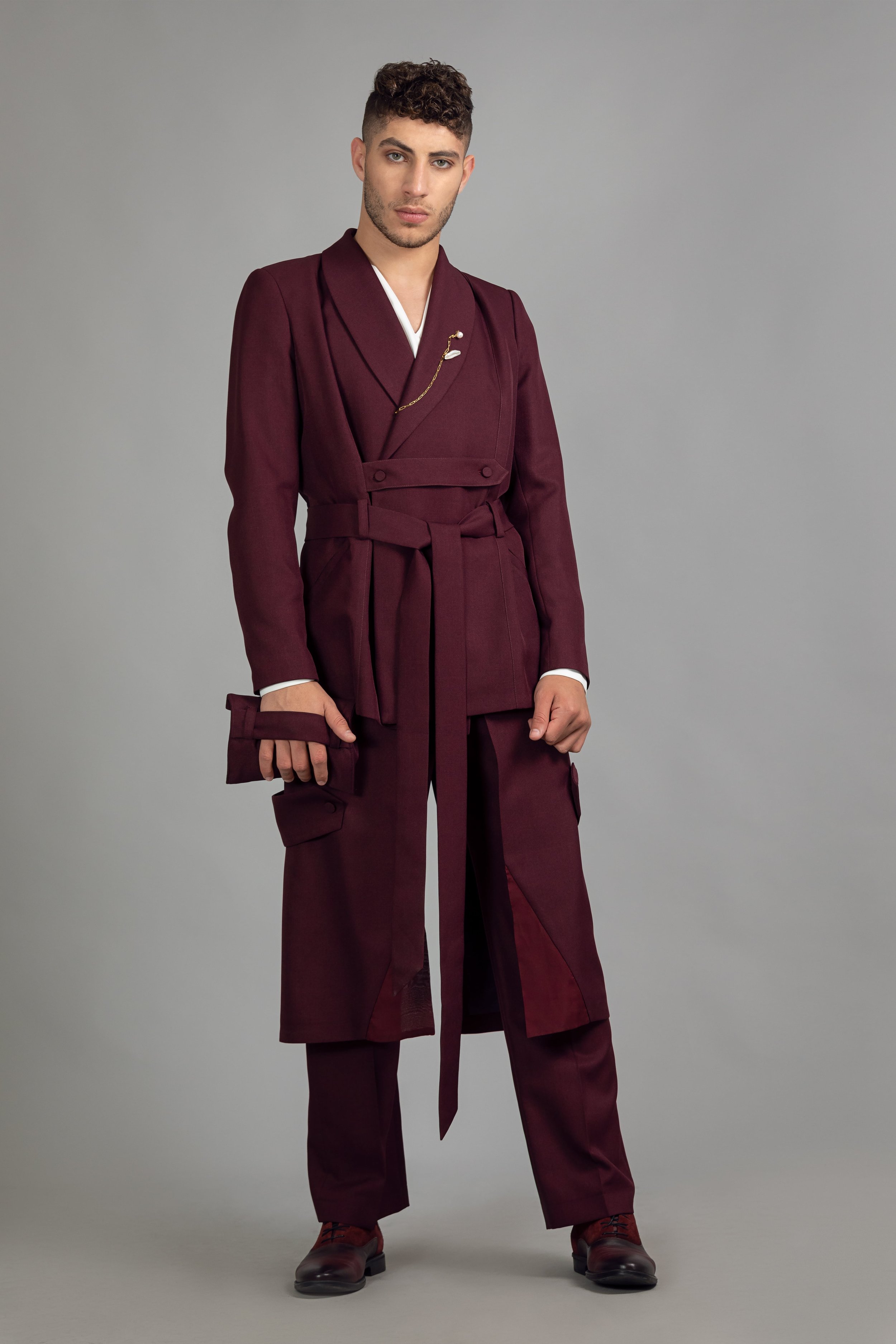
Saint Francis street

Saint Francis street

Saint Francis street

Dabagha street
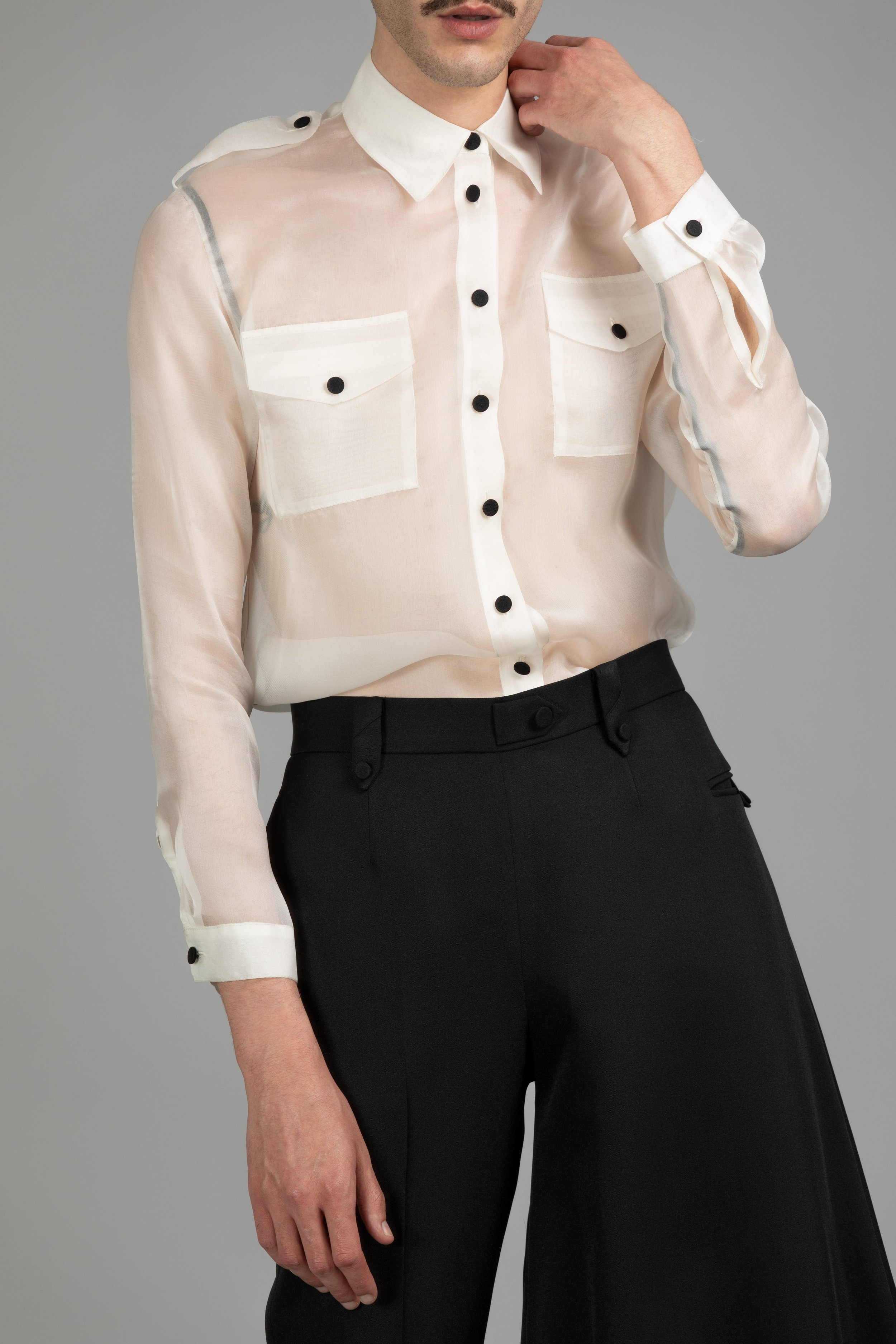
Dabagha street
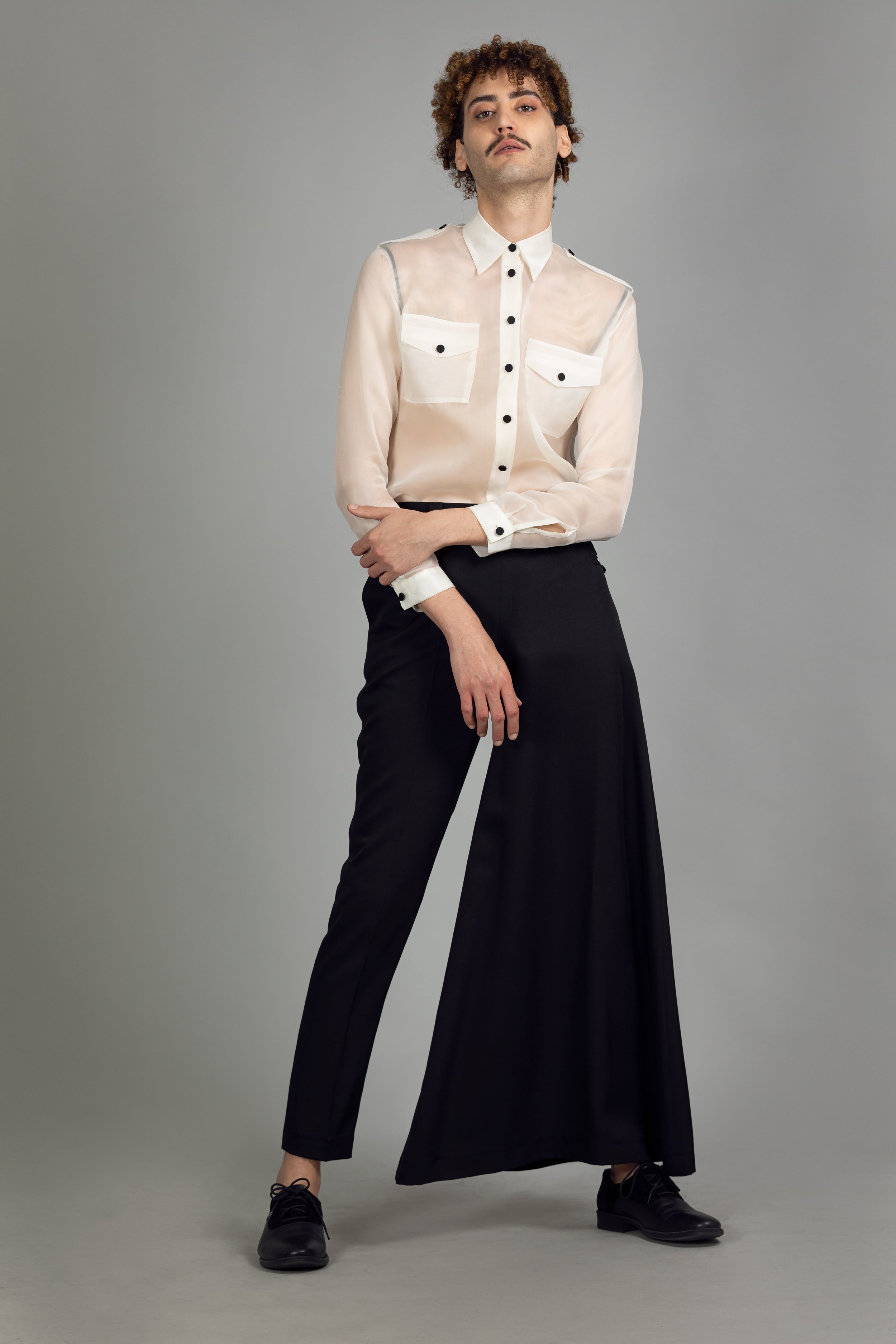
Dabagha street
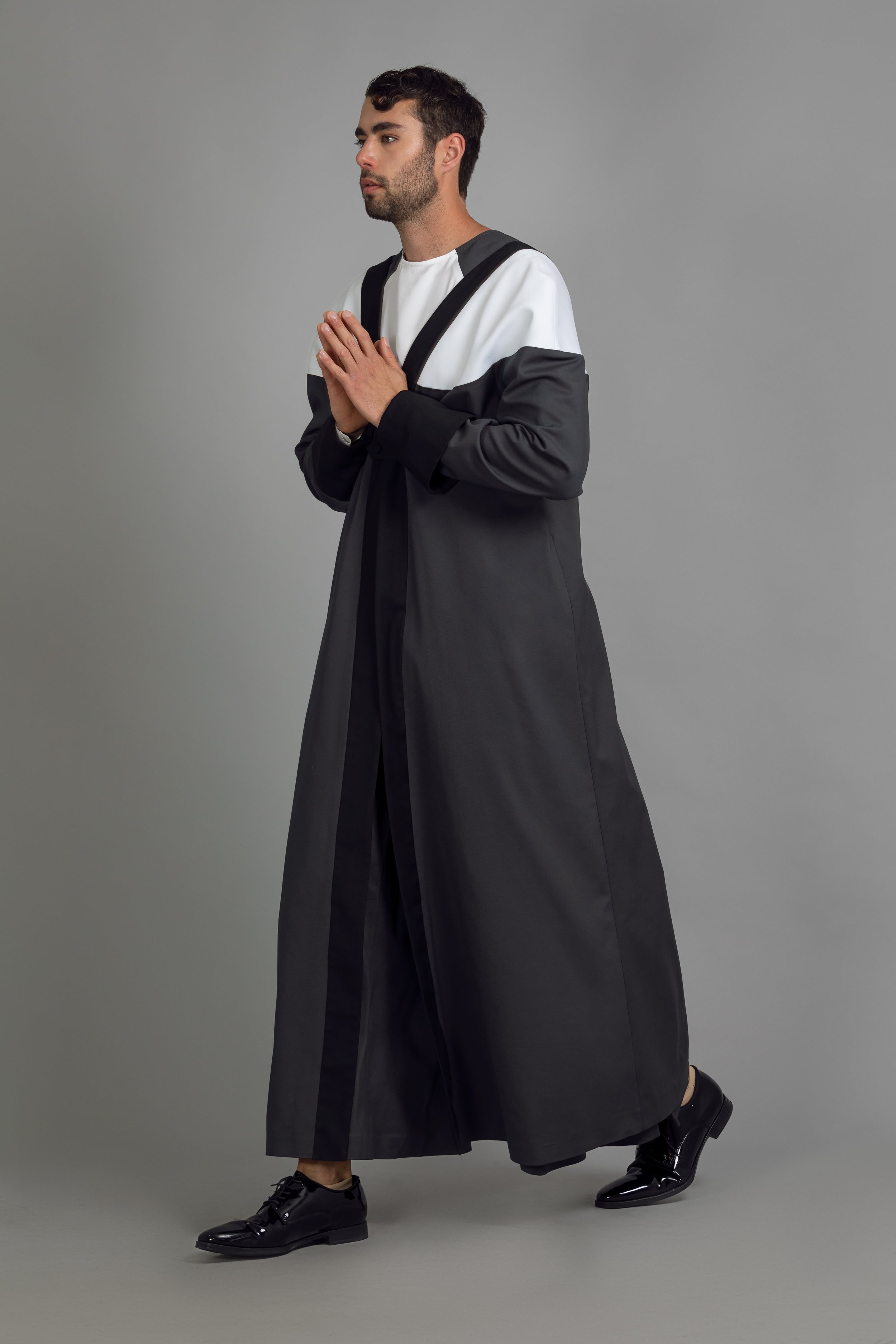
Moristan Street

Moristan Street

Moristan Street

Dabagha street - Saint Francis street - Moristan Street
Saint Francis Street
Saint Francis Street lies within the historic city of Jerusalem, serving as the central thoroughfare for the Catholic community residing in the Christian quarter. A prominent landmark along this street is the Saint Savior Church, a place of worship frequented by my family. This street has been my upbringing milieu, surrounded by Arab Catholic scouts and the church itself. As I traverse this path, I'm consistently reminded of the values of refined beauty, humility, unwavering conviction, and a distinct demeanor.
The rich Burgundy hue, reminiscent of Bordeaux wine, finds its origin within the sacristy of the Saint Savior Church. It emanates from the sumptuous velvets that grace the corners of each intricate artwork, infusing the environment with a sense of opulence and spirituality.
Dabagha Street
Dabagha Street stretches between the confines of my residence and the revered Church of the Holy Sepulchre. This bustling street teems with memento emporiums and a constant stream of tourists. As it constitutes both my ingress and egress route, I traverse its cobblestones regularly. Yet, existing as a unique individual with an alternative identity, I often feel as though I inhabit a space of visibility and translucence.
My ensemble is a testament to this sentiment, an embodiment of my multifaceted gender and sexual identity. It features a fusion of elements: trousers that straddle the line between masculine and feminine, an onyx and ivory organza shirt fastened with buttons, crowned by a sweeping obsidian organza poncho. This attire serves as a tangible manifestation of my identity while retaining an aura of openness.
Black and white, these hues signify the juncture between contrasting poles, eschewing the entire spectrum of color and gradients that once separated them. These colors, which were once divided, now find reconciliation.
Moristan Street
The Moristan Street finds itself a mere 50 meters distant from my abode and a mere 10 meters away from the revered Church of the Holy Sepulcher within the ancient enclave of Jerusalem. This thoroughfare serves as my customary passage out of the old city, often bustling with nuns en route to their devotions at the church. A focal point of the street resides in a grand fountain, an Ottoman marvel, exuding a robust masculinity with its plethora of animal sculptures that appear to extend a connection skyward.
The attire I don bears a distinctive essence, a fusion between the vestments worn by nuns amalgamated with the regal attire of the Ottoman kings. Within its composition, I endeavor to encapsulate both influences.
The palette, composed of white, black, and various shades of grey, derives its inspiration from the monochromatic realm of nun's uniforms and the grayscale depictions that capture the essence of history.

Jaffa street

Jaffa street
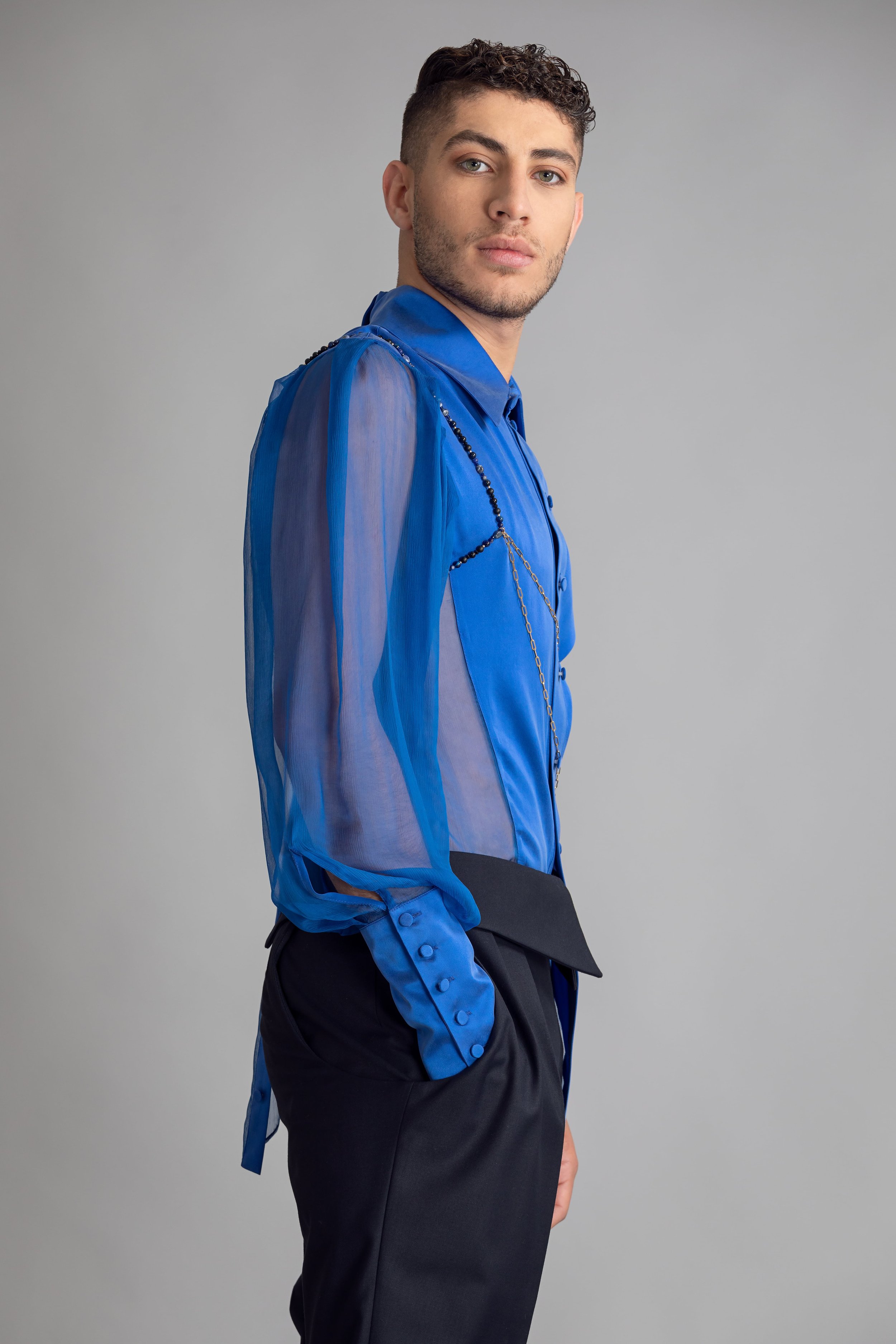
Jaffa street

Saint Helena
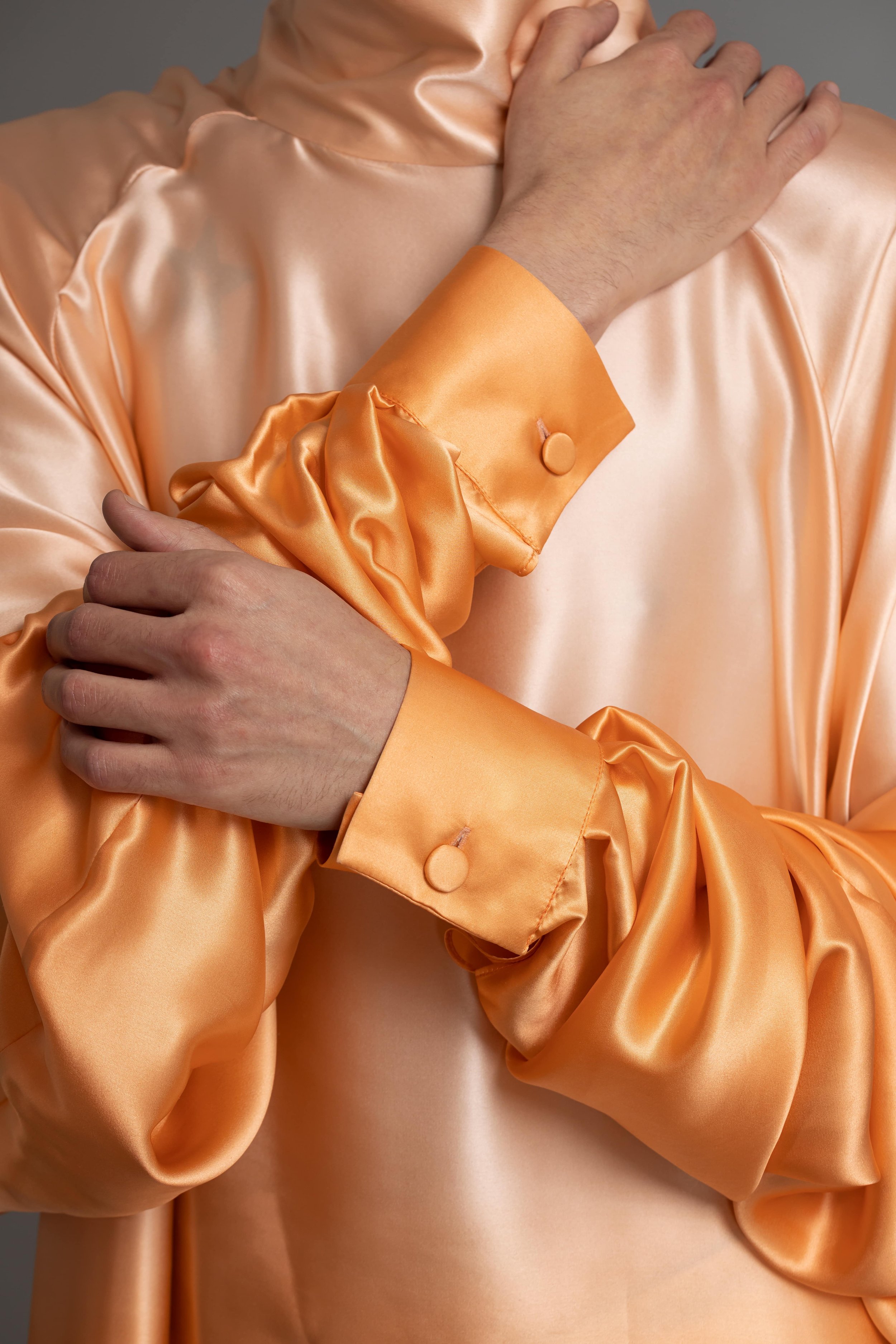
Saint Helena

Saint Helena
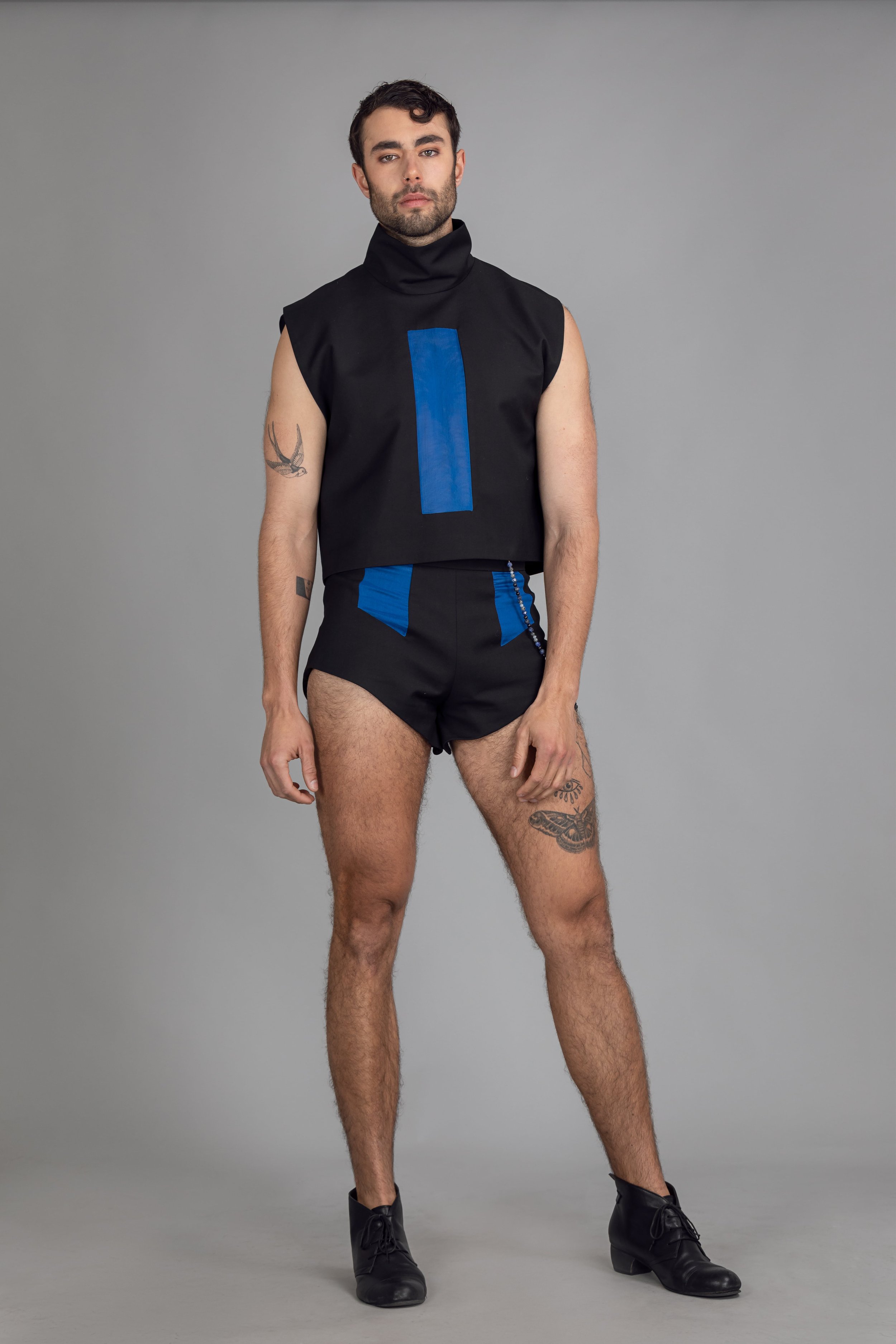
Via dolorosa


Via dolorosa

Via Dolorosa and Jaffa Street

Via Dolorosa and Jaffa Street
Jaffa Street
Jaffa Street occupies the space that lies between the historic Jaffa Gate of the old city and the path leading towards Jaffa itself. Renowned as the pulsating heart of the city, this street presents a hub where every desire finds fulfillment. Within its realm, myriad delights await – daytime shopping sprees seamlessly transform into nighttime revelries and festivities. Consequently, the aesthetic I embrace encapsulates elements of audacity and edge, harmonizing both transparency and restraint. It exudes an air of amusement, a playful allure, coupled with a touch of allure.
The spectrum of blue hues showcased in this context mirrors an electric vitality while preserving an air of sophistication and elegance
Saint Helena Street
Saint Helena Street finds its place atop the revered Church of the Holy Sepulcher within the ancient city of Jerusalem. This locale abounds with a cluster of petite Coptic churches, each distinguished by their exquisite regal embellishments adorning their unpretentious chapels. With each step I take along this path, a sensation akin to nakedness and unblemished purity envelops me, reminiscent of the day I first entered the world.
The color palette resonates from the golden lineage, embodying themes of majesty and sanctity.
Via Dolorosa
The Via Dolorosa, also known as the Sorrowful Way, traces a solemn procession through the historic expanse of the Old City of Jerusalem. This revered path is believed to retrace the steps that Jesus trod on his fateful journey toward crucifixion. The route encompasses 14 stations, each commemorating a poignant moment of the torment endured by Jesus en route to his cruciform destiny. Every year, on Holy Friday, the Christian community undertakes this pilgrimage along the Via Dolorosa, a collective act of remembrance for the trials endured by Jesus.
The attire adapted for this solemn journey isn't bound by strict modesty, given the arduous nature of the path. Instead, it takes on the form of tailored sportswear, meticulously designed to facilitate the challenging walk.
In terms of symbolism, the color choices are evocative: black embodies the weight of sorrow that accompanies this journey, while blue mirrors the purity of water and the act of baptism.

Alaa Al-Din Street

Alaa Al-Din Street

Alaa Al-Din Street
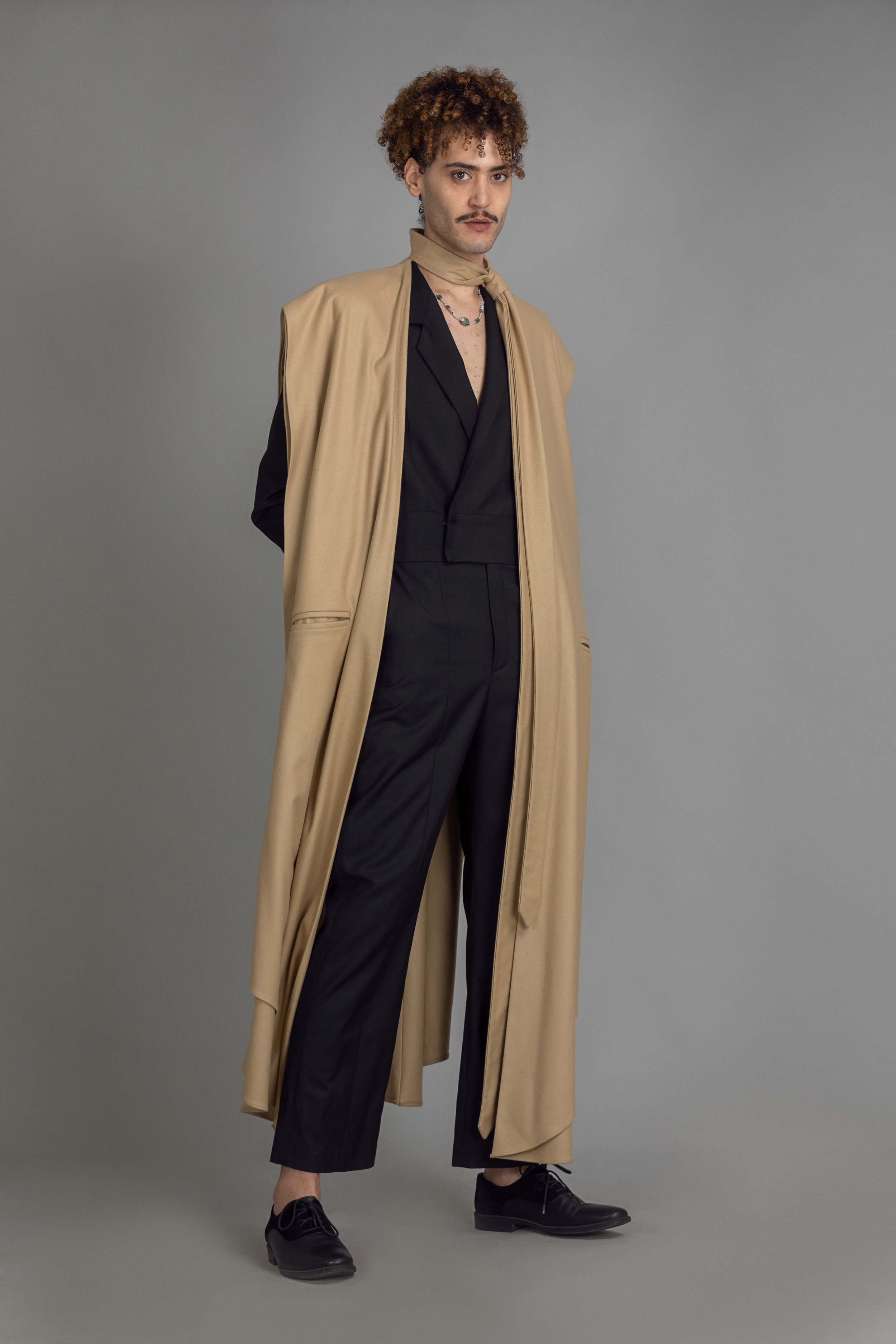
Talbiya street
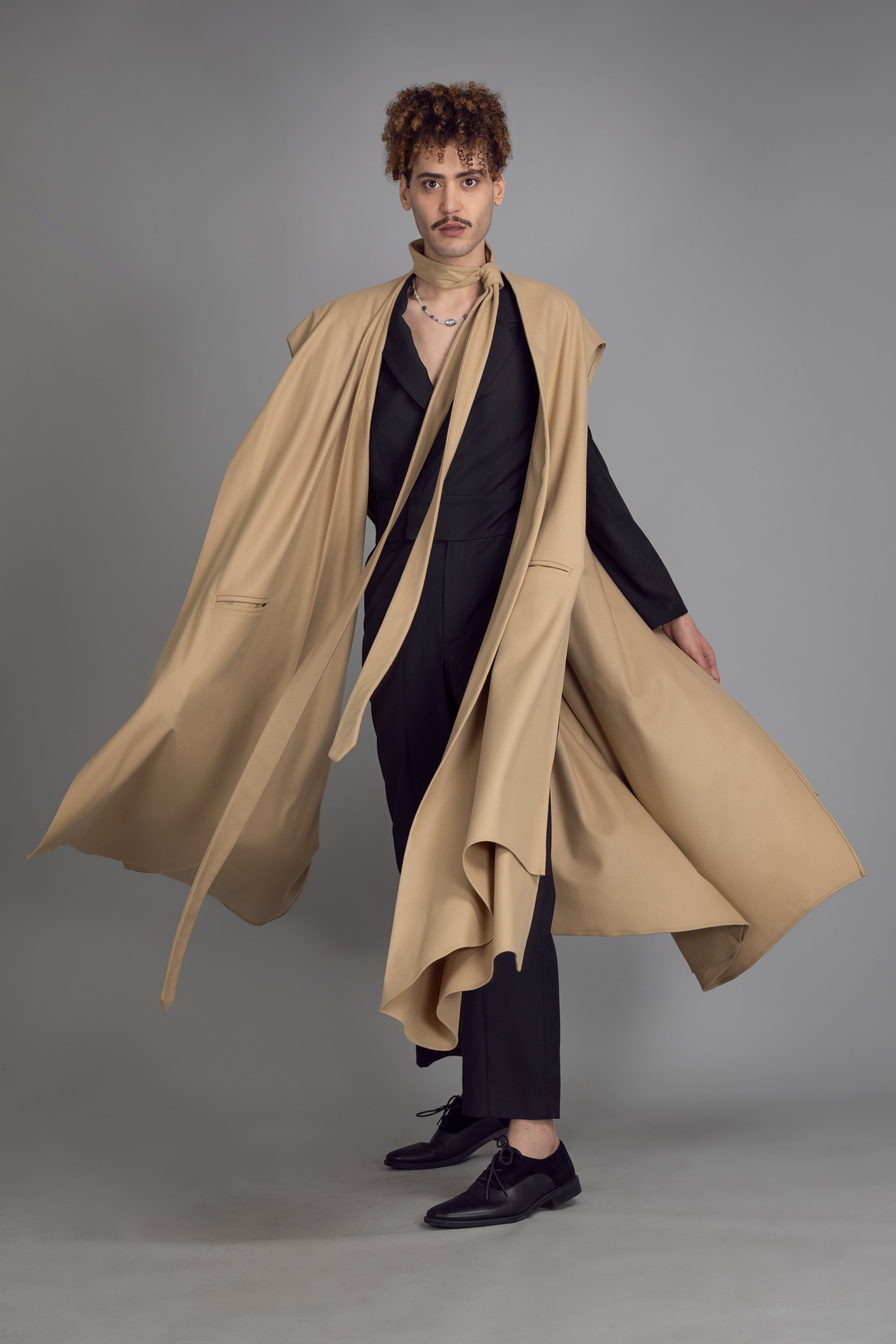
Talbiya street
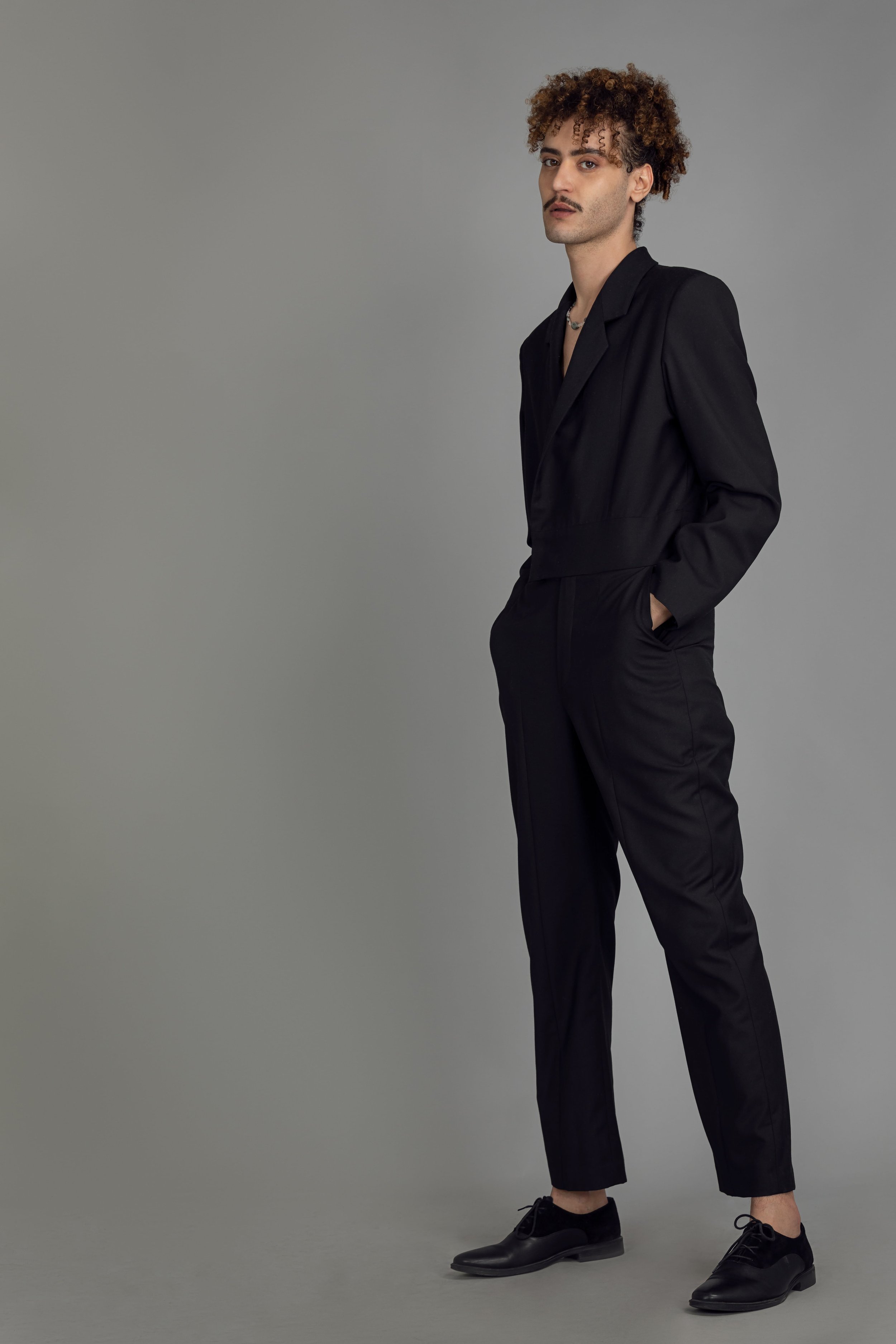
Talbiya street

Al Wad Street
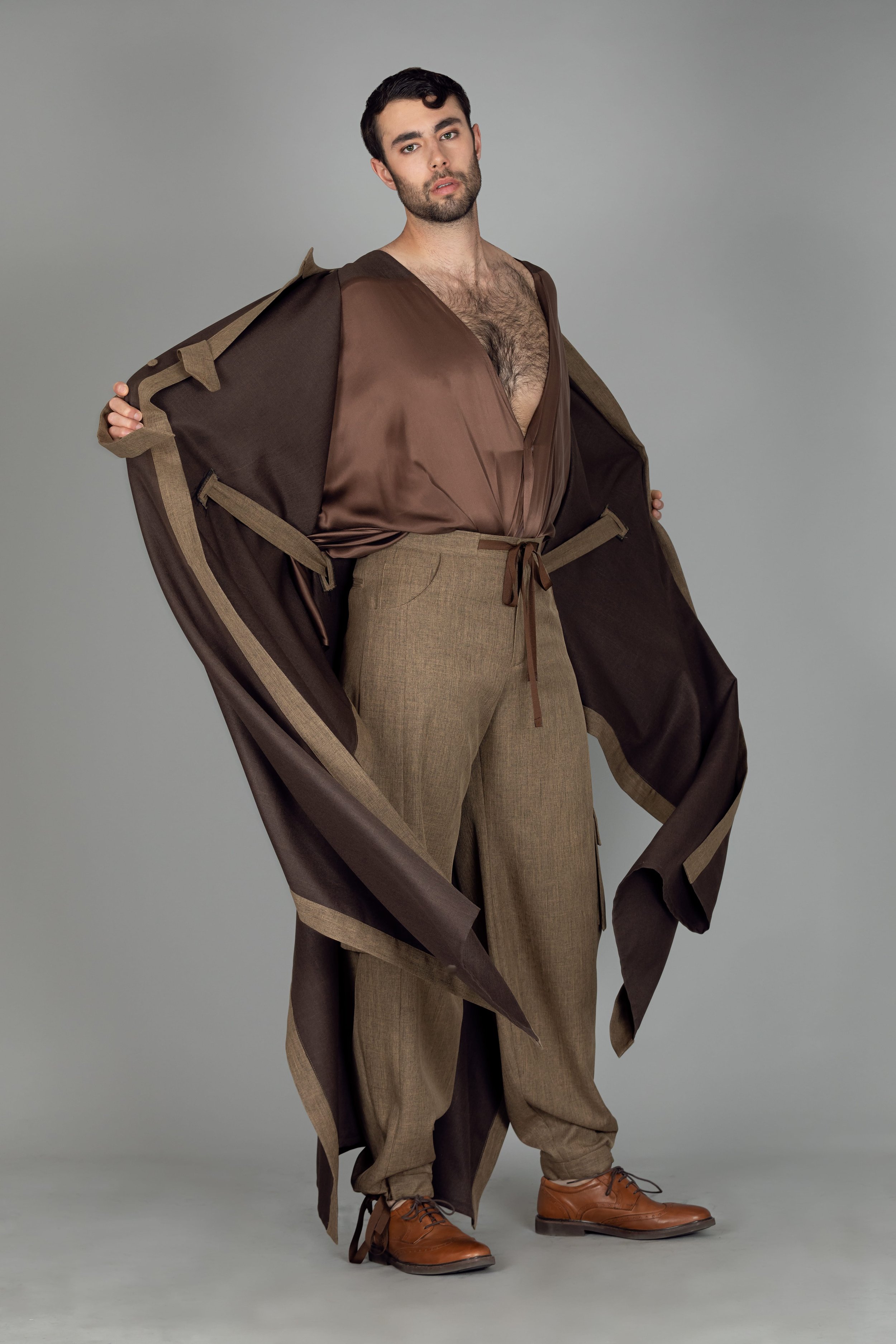
Al Wad Street

Al Wad Street

Talbiya Street - Alaa Al Din Street - Al Wad Street

Talbiya Street - Alaa Al Din Street - Al Wad Street
Alaa Al-Din Street
Alaa Al-Din Street finds its place in proximity to the esteemed Al Aqsa Mosque within the historic precincts of the old city. For me, the most cherished period to traverse its lanes is during Ramadan, a time synonymous with a multitude of devout Muslim prayers converging there, adorned in the serene elegance of white Galabias. It's a season marked by the resplendent rituals of breaking fast, a time when the streets come alive with vibrant ceremonies and nourishment after each day's spiritual abstention.
The attire chosen resonates with the sensation of fluttering butterflies, embodied in the supple Silk Galabia. Its form effortlessly merges tailored shoulders with a body-hugging silhouette, rendering it an ensemble of jubilant festivity, unmatched comfort, and open-hearted hospitality.
The color palette draws inspiration from two distinct realms: the opulence of gold and the grounding tones of the earth. These hues, reminiscent of the materials used in erecting the magnificent Al Aqsa Mosque, converge in harmony.
Talbiya Street
Talbiya Street graces the western expanse of Jerusalem, a canvas of history adorned with the grace of bygone times. Within this tapestry, you'll find a symphony of beauty, each note resonating with the delicate details of antiquated Arab homes. As you meander through this architectural reverie, your steps will cross paths with a particular demographic – affluent Jewish families, their heritage steeped in Western religious tradition. It's a mingling of cultures where one's foundation finds itself cloaked in the fabric of another's identity. Here, my meticulously tailored black classic suit undergoes a transformation, evolving into a jumpsuit, a more enticing adaptation further veiled by a draping poncho.
The color symphony of black and brown plays an essential tune, echoing the classical notes commonly woven into tailored ensembles and typically reserved for masculine attires. In this narrative, black embodies the bedrock of tradition, while brown embodies the echoes of ancient stones cascading from the mountainsides.
Al-Wad Street
Al-Wad Street finds its place within the vibrant tapestry of the Muslim Quarter in the old city, serving as the bustling nexus that weaves through this historic enclave, even intersecting with the solemn Via Dolorosa. As the very heartbeat of the Muslim quarter, this street is perpetually alive with the ebb and flow of people. Amidst this vibrant throng, my intention is to spotlight the diligent toil of the hardworking laborers.
The ensemble harmoniously assembles three distinct elements: trousers crafted in the likeness of laborer's attire, deliberately designed for comfort and ease of movement; a silk kimono, draped gracefully to enable unbridled motion and an infusion of refreshing airflow; and a poncho reminiscent of the traditional Abaya that once adorned men of yore.
The palette draws deeply from the earth's spectrum, a symbolic nod to the significance of reconnecting with the soil we've long tended to and sometimes overlooked. It pays tribute to the workers, the architects of cleanliness and progress, and the foundational elements of existence that we occasionally neglect.


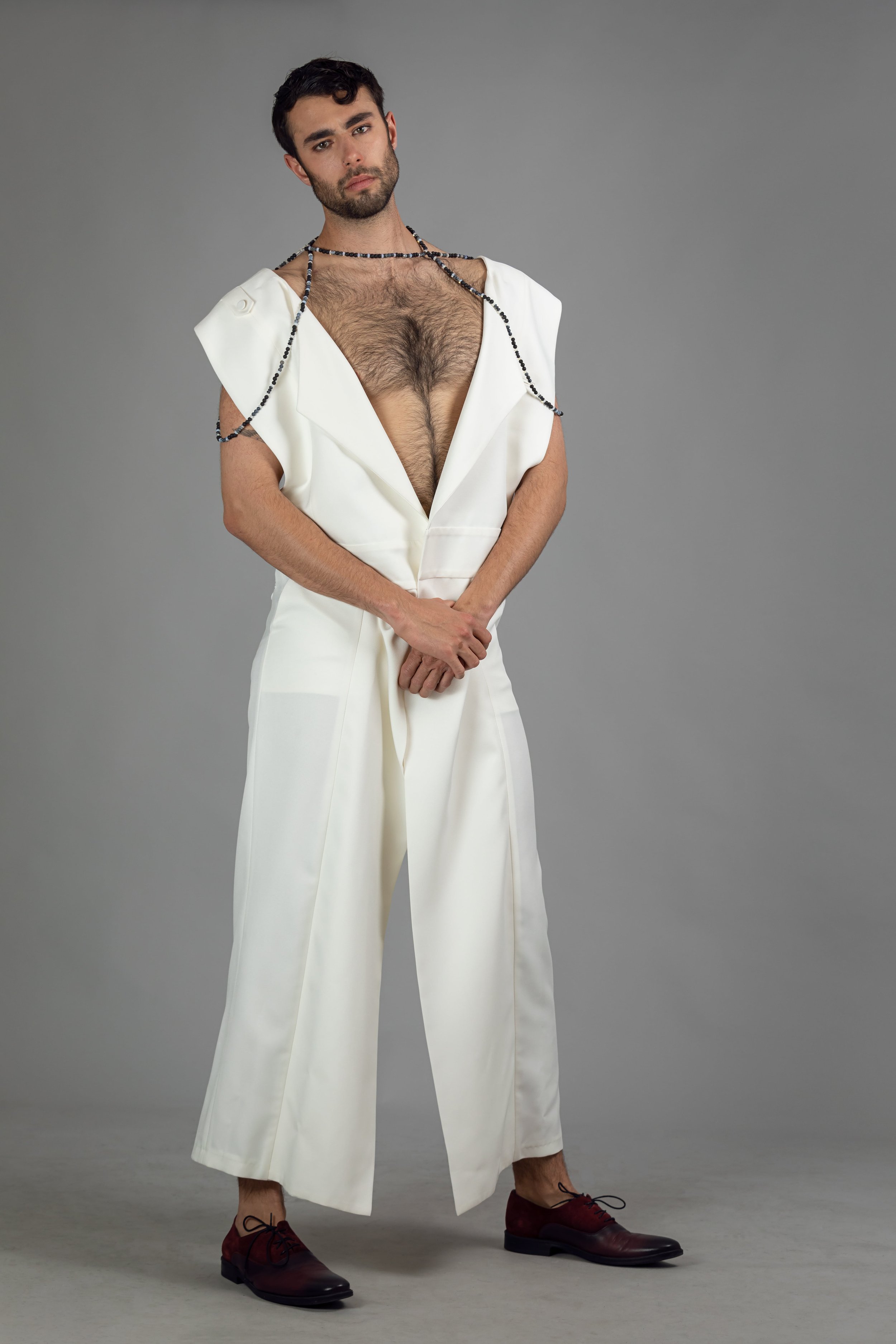
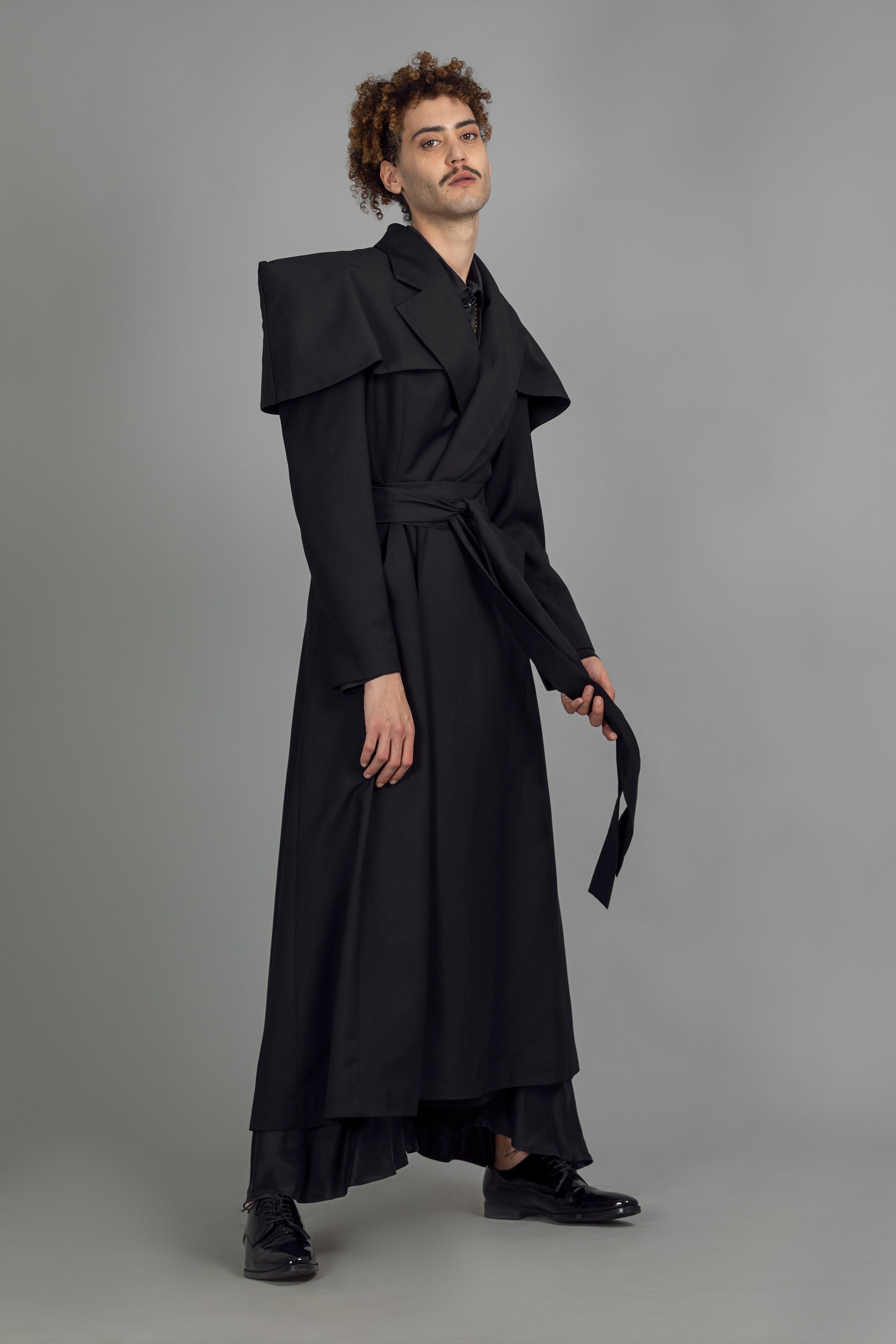








Saint George Street
Saint George Street finds itself nestled in the eastern expanse of Jerusalem, in close proximity to the historic Old City, near the iconic Damascus Gate. Within the embrace of this street, I embarked on a profound journey of self-exploration, grappling with questions that reverberated at the core of my religious identity. It was here that the notion of becoming a priest took root in my thoughts, sparking a process of introspection that led me to uncover the essence of my true self.
The color that takes center stage is akin to the sweetness of sugar, a gentler iteration of white. In this context, it symbolizes triumph, a victorious note that resonates with my journey of self-discovery and the path I've treaded.
Mea Shearim Street
Mea Shearim Street lies in close proximity to the heart of the city, forming a border with the bustling city center. Within its confines, an enclave of ultra-orthodox Jewish life thrives. The residents here adhere fervently to a dress code that harks back to the 19th-century, characterized by a monochromatic palette of black and white, reflecting unparalleled modesty. This locality stands as a bastion of utmost conservatism within Jerusalem, marked by its extremes.
When traversing this territory, my desire is to blend into the background, seeking anonymity and obscurity. My wish is to go unnoticed, ensuring my safe passage through this unique setting. The attire chosen for such an environment comprises a black Galabiya, reminiscent of Islamic tradition, layered with a substantial coat reminiscent of priestly garments. Atop this ensemble rests a black veil, worn by devout women across three religions, signifying a profound commitment to faith. This same veil also takes on the form of a corona mask, embodying its modern-day significance, while simultaneously symbolizing the veiled beauty of a bride.
The dress remains resolutely black, a choice bound by the context and its inherent necessity.
Mamilla Avenue
Mamilla Avenue gracefully spans between the historic Jaffa Gate of the old city and the serene Independence Park. Situated as the nearest shopping enclave to the ancient city, it has grown into a vibrant hub where each individual revels in their distinctiveness. As I step onto its walkway, a surge of confidence washes over me, akin to striding down a catwalk, all while absorbing the joyful scenes of people embracing their lives.
Mamilla has become renowned for its iconic wedding photoshoots, often featuring resplendent brides who strike stunning poses. Amidst the passing crowd, jubilant cries of congratulations fill the air, creating a symphony of celebration.
The ensemble thoughtfully unites five key elements: the flowing trousers, evoking the serenity of a stream; the corset; the delicately ribboned shirt; the precisely tailored jacket; and a veil that carries profound significance across three religions, embodying both its traditional meaning and doubling as a corona mask, symbolizing the veil of a bride.
The choice of white envelops the ensemble, a hue that symbolizes a celebration of individuality and a heart brimming with purity.

